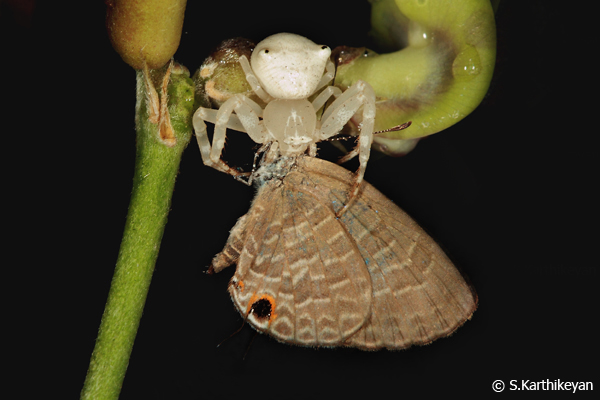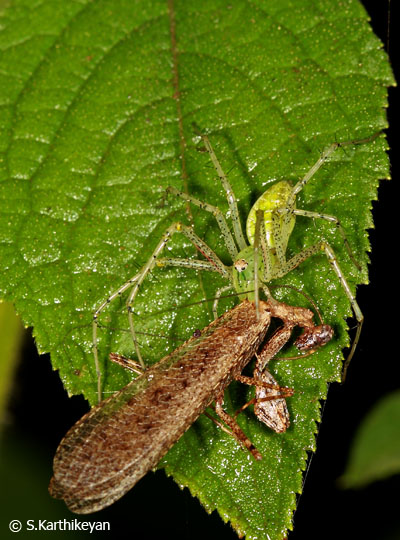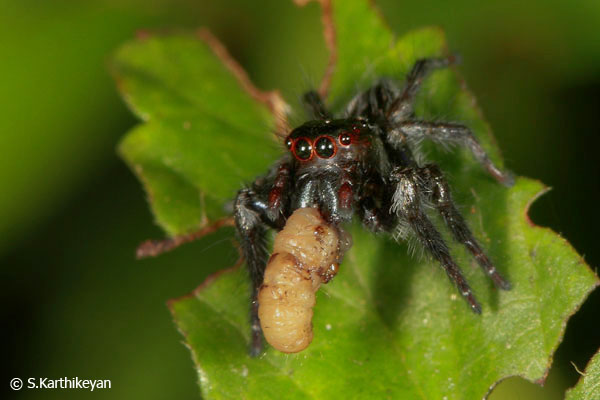Monsoons breathe new life into the landscape. The dry landscape suddenly becomes a vibrant green. The countryside that was hitherto seemingly dull, dreary, dry and bereft of any life suddenly seems to be buzzing with activity. Plants are in various processes of their reproductive stage. All animals try to maximise this time of plenty.
This was the setting when a few of us headed out one morning to the countryside a short distance from Bangalore, perhaps a 45 minute drive from the southern parts of the city. The light was dismal, the sky overcast. We had parked the vehicles and were exploring some of the lush roadside vegetation.
My eyes were drawn to a little butterfly that was sitting on a leaf. As I went closer to photograph, I realised that the Dark Cerulean Jamides bochus was in the jaws of a Crab Spider (Family Thomisidae). I was planning to photograph the butterfly, but instead caught the butterfly becoming the meal of a spider – a bonus natural history photo-op! Many Crab spiders are known to stay in flowers, their colour often matching the flower. They catch and make a meal of the insects that visit the flowers.

There was a constant breeze through the morning and photographing was not easy. I started scanning the vegetation within my eyeshot as I waited for the breeze to stop so that I could continue photographing. I sighted a little brown leaf-like thing that was curiously stuck to the underside of the lantana leaf. Even as my fingers neared the leaf, a Green Lynx Spider (Peucetia viridana; Family Oxyopidae) suddenly moved to the upperside of the same leaf. The brown ‘leaf’ that I had espied turned out to be a praying mantis that was becoming the meal of the spider! The present position of the spider offered excellent opportunity for photographing. We managed some good shots of this too. The Lynx spiders are active hunters. They are diurnal and live on vegetation.

We were satisfied with the pictures in spite of all the odds (breeze, constant traffic movement which threatened to run us over, etc.) and were ready to continue further when one of us spotted a little black creature in a low shrub – it turned out to be a Jumping Spider (Family Salticidae). The jumping spider was also having its morning meal; feeding on something we could not identify. This spider was particularly shy and gave us only 3 record shots before disappearing into the shrubbery.

There was so much life within a few square meters and before we realised we had spent a good hour photographing these 3 “preying” spiders! We were also left wondering about the kind of impact that spiders must be having on insect populations and the role of spiders in keeping a check on insect numbers which we very often ignore or even overlook.